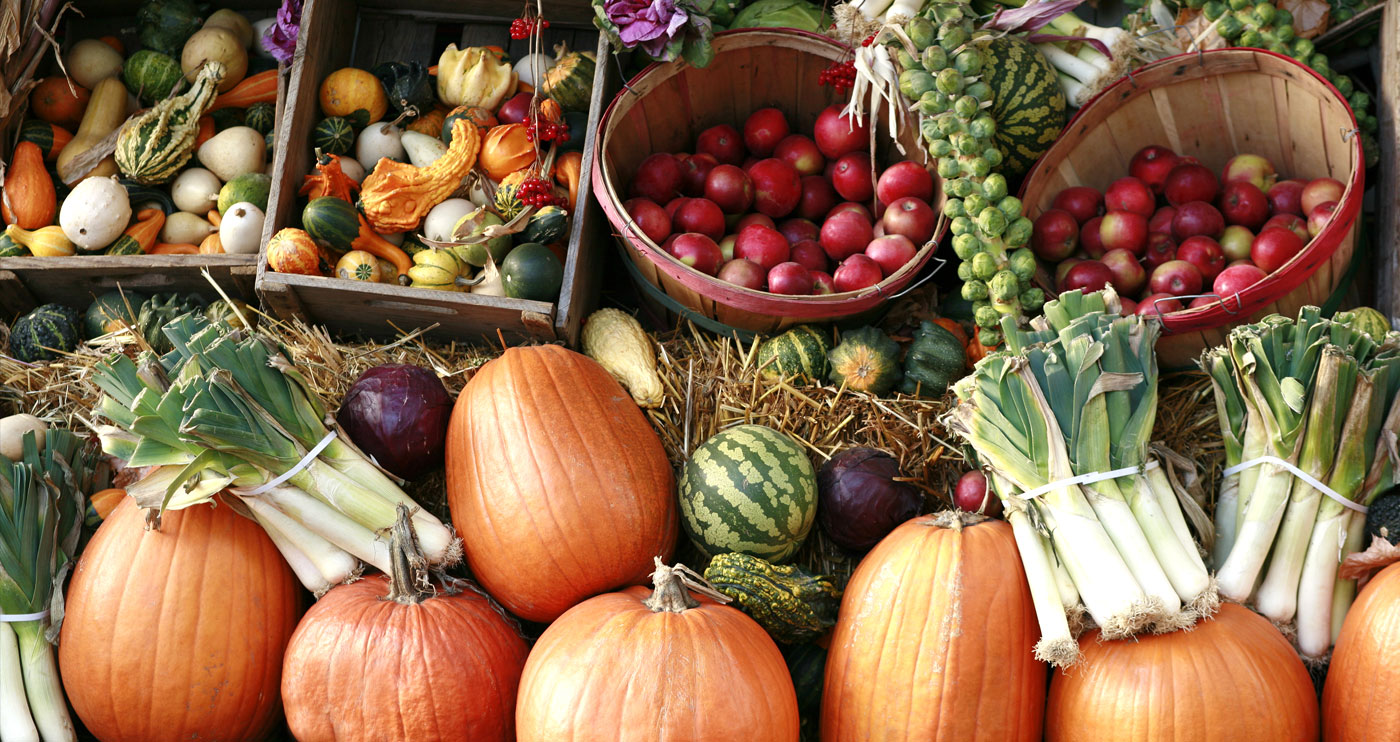
When most people picture fresh fruits and vegetables, their imaginations go to the bounties of summer — like fresh tomatoes off the vine and juicy peaches. Autumn has just as much to offer, and many varieties of produce benefit from growing during the cooler months. Here are the best fruits and veggies of fall and how they can benefit you:
-
Beets
These root vegetables give dishes an earthy sweetness that pairs wonderfully with salads, tart goat cheese, and an abundance of other dishes. They’re also jam-packed with antioxidants that give them their deep purple color, as well as vitamin C, vitamin B6, folate, magnesium, iron, and potassium. You don’t have to limit yourself to the roots either — you can prepare the greens the same way you would spinach or kale.
Most people don’t get enough potassium. This crucial mineral helps your body maintain a healthy heart rhythm and muscle contractions. Vitamin C is important for proper immune function, so you can have an easier time during cold and flu season. -
Winter squashes
Squashes, like butternut squash and pumpkin, are loaded with beta carotene. This is what gives them their characteristic orange and yellow colors. They’re also packed with fiber, magnesium, and potassium. “Winter squashes” are so named because they keep well through the winter, so feel free to stock up and add them to soups, stews, chowders, casseroles, savory pies, and more.
Pumpkin seeds are also a great source of protein and minerals. Scoop them out, clean them well, lightly salt them, and roast them in the oven at 170°F for about 15 minutes. -
Cauliflower
If you’ve been trying to reduce your carb intake, you’ve probably seen all the different ways to use cauliflower. It can substitute for potatoes, rice, and other high-carb foods, all while providing fiber, choline, and antioxidants. It can help combat inflammation and ensure healthy immune function, which is very important as the fall/winter cold and flu season approaches.
You can even use cauliflower as a meat substitute by taking a whole head, slicing it into 1″ thick slices, marinating it in a little soy sauce, spices, and honey, then cooking it in a pan until lightly seared on the outside and tender in the middle.
Cauliflower, like a lot of brassicas, grows well in cooler weather. Autumn is when it’s in season and tastes its best. -
Kale
Kale is very nutrient dense yet has surprisingly few calories. If you’re looking to improve the overall quality of your diet, try adding kale to your favorite dishes. For best results, kale should at least be wilted — cook it lightly for about three minutes, just until the greens soften. This will help eliminate some of the fibrous texture and break down the plant’s cell walls so you can absorb more nutrients.
Kale is also at its best during fall and winter. If you garden, you can even grow kale through the winter in many areas. -
Turnips
These root vegetables are a hearty, warming food that makes a great base for many comforting dishes. Turnips also contain compounds that enhance immunity, improve heart health, and may reduce the risk of certain cancers. Like many other root vegetables, they’re also rich in minerals.
You can use turnips raw or cooked. Raw, they make a mildly spicy, crunchy addition to salads or wraps. Cooked, you can treat them like potatoes and put them in soups or stews, have them au gratin, or even mash them. -
Apples
What would autumn be without apples? Fortunately, these fruits are also rich in antioxidants, phytonutrients, and fiber. Apples contain pectin, which binds to cholesterol in the intestines and can help improve heart health. It’s also great at helping digestive issues and promoting regularity. Apples’ anti-inflammatory effects may help reduce the risk of asthma, cancer, and cardiovascular diseases.
There are so many apple varieties out there, you’re guaranteed to find one that suits your tastes. Try them raw as a quick snack, or as a sweet accompaniment to savory dishes. Make a delicious autumn salad with kale, apples, goat cheese, and roasted pumpkin seeds to benefit from a bunch of fall’s best offerings. You can also cook apples, make them into a sauce, add thin slices to sandwiches, and much more. -
Cranberries
Cranberries are probably best known as a medicinal food for urinary health, but they can do a lot more than that. They’re loaded with antioxidants and can help boost the immune system, which is important for fighting off the respiratory viruses common to cold weather.
Cranberries are usually cooked in recipes, but you can use the fresh fruits as well. Add some to smoothies, oatmeal, or cereal, or dehydrate them for a quick snack anytime.
Eating seasonally is healthier, tastier, cheaper, and more sustainable than purchasing out-of-season foods. Autumn fruits and vegetables are some of the most colorful, tasty, and nutrient-packed foods out there. They can help improve your overall health, as well as help you fight off colds and influenza. Some of them, like turnips and cauliflower, can even be healthy substitutions in your favorite comfort foods.